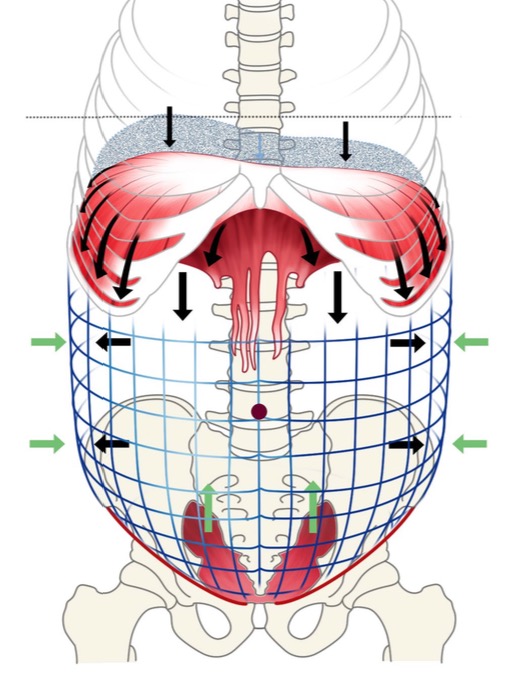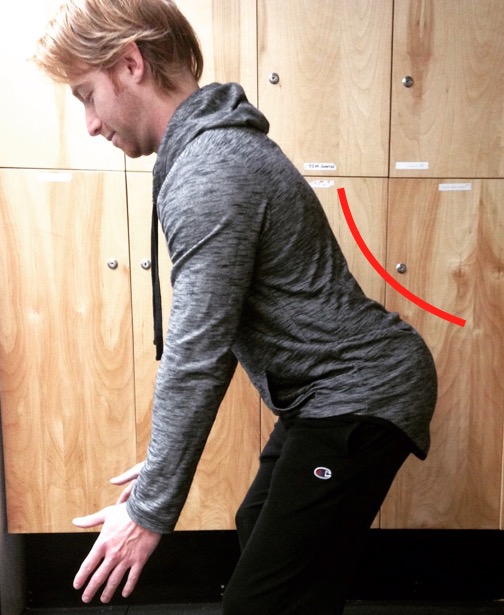
The Most Important Yet Most Neglected Muscle of The Body Part 2: Diaphragmatic (Core) Stabilization
Have you ever wondered what it means when a trainer, therapist, or instructor asks you to “brace,” “flex” or “tighten up” your core? More importantly, are you doing it right and are you doing it “automatically” prior to and during normal movements and exercise?
This cue is given to help you create a stable core. The key to a strong, stable core and body is the ability to create pressure within the abdomen, or intra-abdominal pressure (IAP). IAP is a fundamental mechanism for you to initiate, control or even prevent movement. The amount of IAP you create is dependent on what you are doing at any given time. If you are sitting in your car on your way to work, IAP will be minimal. If you are lifting a 100 pound object off the floor, IAP will be greatly elevated. The amount of IAP is constantly regulated to match whatever movement or lifting task that you are performing.

Want to feel IAP? Cough or make a “CH” sound. Can you feel the pressure build inside your abdomen? This is what needs to occur automatically to keep your core and spine stable to give you strength and prevent spinal injury.
How Do We Generate IAP?
The core is like a cylinder of muscles. At the top is the diaphragm, the surrounding wall consists of the abdominals and multifidus (along the spine). The bottom consists of the muscles of the pelvic floor. PRIOR TO ANY MOVEMENT, the diaphragm contracts and pushes downward towards the abdomen. At the same time, the entire abdominal wall and muscles of the pelvic floor expand, eccentrically contract and “tighten up.” This compresses all of the contents of the abdomen which creates IAP. IT IS IAP THAT GIVES US STRENGTH, STABILIZES OUR CORE AND PROTECTS OUR SPINE FROM INJURY.
What Happens If We Can’t Generate and Maintain IAP?

Many of us lose the ability to generate and maintain IAP because of past physical or emotional trauma, pain, injuries, etc. The diaphragm is often one of the first muscles to become dysfunctional. Portions of the muscle become “shut down” and it does not push down like it did before. The diaphragm, abdominal and pelvic floor muscles get out of sync, uncoordinated and IAP is diminished. Our only option is to compensate by adopting a lumbar extension stabilization strategy. We tighten up our low back muscles causing it to arch too much to create some semblance of core and spine stability. Unfortunately, this is not an effective long-term solution to the IAP problem. If this problem persists for too long, back muscles become tight, overused and painful, spinal discs can become injured and lower back pain eventually develops. Hip and shoulder joints also become secondary areas of abuse and wear and tear.
MUSCLE TIGHTNESS IN THE BACK IS A COMPENSATION TO THE INABILITY TO GENERATE AND MAINTAIN IAP!
Testing the diaphragm is an important part of my examination process with patients. If it is not working properly, we implement treatment and exercises to rehabilitate this very important yet most neglected muscle in the body. I have helped many patients with this approach no matter what type of pain or musculoskeletal problem they have.
I help people every day with problems caused by a dysfunctional diaphragm. If you or someone you know is having ongoing spine or extremity problems, contact me to see if I can help.

